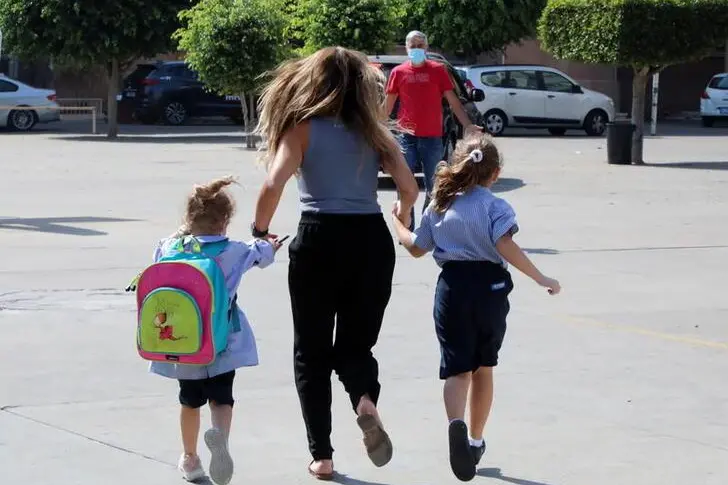PHOTO
Dressed in a black T-shirt and trousers, a woman is running away from something. Along with others in a still from Beirut, she is escaping gunfire on the street. The movingly terrified face of this woman in mourning tells a million stories. She must be in her 50s, her simple attire and face without makeup tell of recent loss to death, almost certainly of a close family member. Small wonder she is terrified. Her left forearm is pressing a small bottle of water tightly to her chest. Her right arm is extended behind a young woman whose shocked face bears resemblance to what I imagine is her mother’s. She would have been a child when war broke out with street clashes in the Lebanese capital in 1975, not far from where she is running for shelter today. She is clutching life with both hands — her daughter in one and in the other what the two will need to survive a warm Mediterranean day seeking shelter. The presumed mother seems to be escaping death, but death is still surrounding her. After surviving decades of war, ongoing life-destroying economic hardship and the loss of family, death insists on following her.
Videos and images of the armed clashes abound in international news outlets. Despite much reporting in the aftermath of last Thursday in Beirut, hardly a coherent account of events has been given. Nothing new, one might say. Lebanon still has a significant amount of combat weapons unaccounted for since the early 1990s, when active fighting ceased. The government, local communities and international players have worked hard over the decades to persuade civilians to hand over their weapons to the Lebanese army. Peace-building initiatives have also advocated for such goodwill practices, which in other countries have seen better success, especially when handovers were incentivized by material compensation. Not in Lebanon. Well into the 2000s, tenacious militiamen traveled around with a full arsenal in their car trunks.
Mistrust runs very deep in a country where generations-old divides cut even deeper, especially along inherited sectarian fault lines. Lebanon has not gone through processes of intercommunal reconciliation after ceasefire agreements, and in recent years the fault lines have been reaffirmed along political lines. Last week’s deadly events are a sign that healing is yet to begin. If they revealed a rarely acknowledged sentiment in the postwar memory of Lebanon, then it is unprocessed grief.
The people of Lebanon, already made vulnerable by a devastated economy, are now terrified. This is the case not only on the streets of Badaro and Tayyouneh, but also in homes, schools and hospitals across the embattled capital and the wider country. Reports from professional journalists fail to conceal shaking voices, an eerily reminiscent situation to the immediate aftermath of the 9/11 attacks in New York City two decades ago. This is not a good sign. When expert reporters don’t know what to make of an event, you know something major is unfolding; and the outlook is rarely positive.
Demonstrators on the street say snipers shot at them from atop apartment buildings. While none of the main opposing factions claimed responsibility for igniting the bloody clashes, their leaders stopped short of denying the capability of engaging in the exchange of serious gunfire. Regardless of who shot first, civilians found themselves caught in the middle. Video footage showed men, women and children running across streets to take shelter behind something or other. Some wrapped their arms around more vulnerable companions, others covered a loved one’s forehead with their hand. Instinctual gestures of protection, little though they might do in the face of bullets.
About pictures of children barricading on a street behind cars or cowering under classroom desks, a friend lamented that young children, among them her own, were forced to experience the daily traumas she had endured throughout her childhood years, which were lived entirely during war. We now know that trauma repeats itself for individuals, as well as intergenerationally, and that is bad enough. But in the Lebanon of today, the sophisticated workings of the human nervous and genetic systems are not needed for the task. Traumatic experiences of war insist on repeating themselves in unavoidable ways.
No matter how hard a parent tries to protect their offspring, fresh traumatic experiences are not in short supply. Unless a radical way of stopping them is agreed and executed in this volatile setting, trauma will continue to be etched into the memories of every generation in Lebanon. Sadly, as this repetition is being observed in Beirut today, similar risks are all too real for countries across the region.
- Tala Jarjour is author of “Sense and Sadness: Syriac Chant in Aleppo.” She is visiting research fellow at King’s College London and associate fellow at the Yale College.
Copyright: Arab News © 2021 All rights reserved. Provided by SyndiGate Media Inc. (Syndigate.info).












